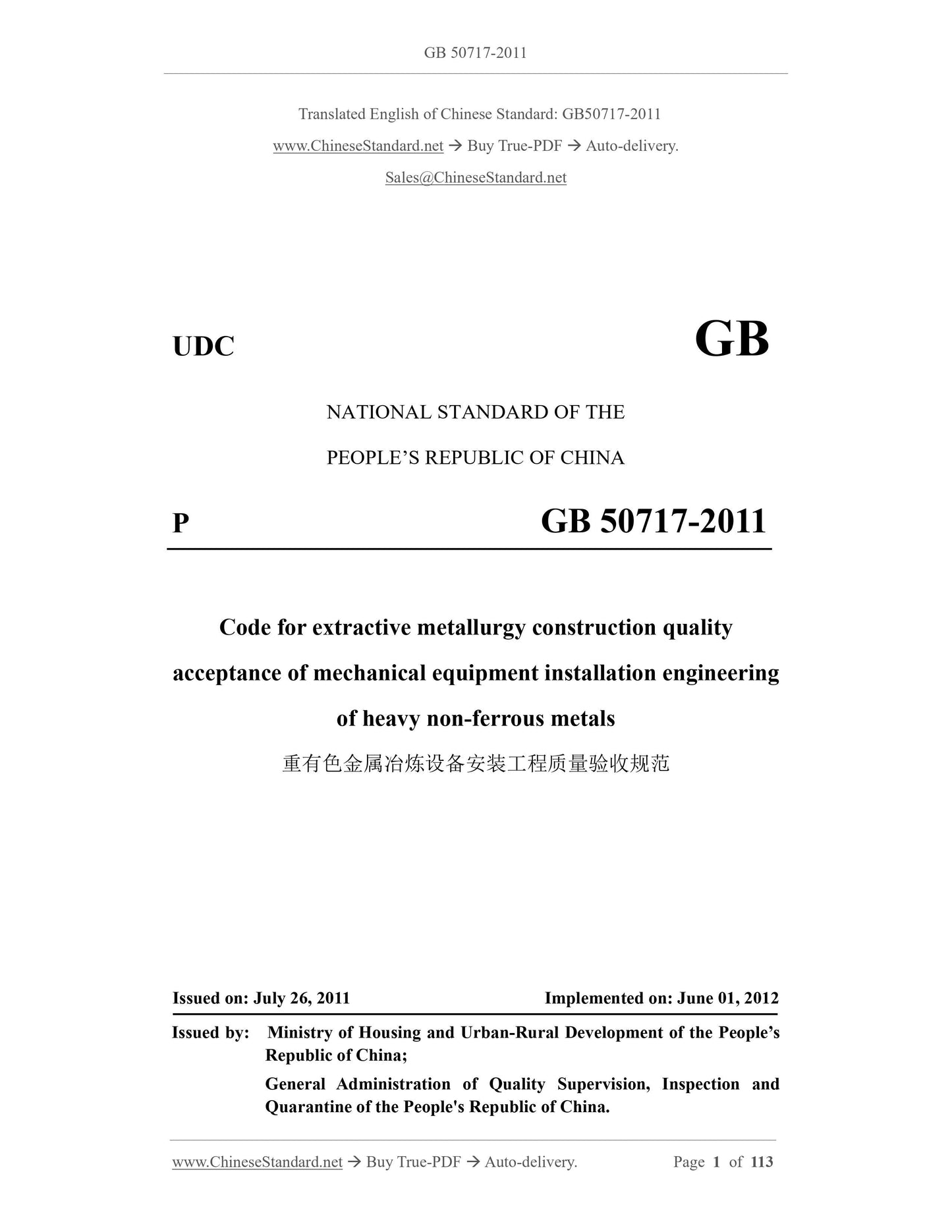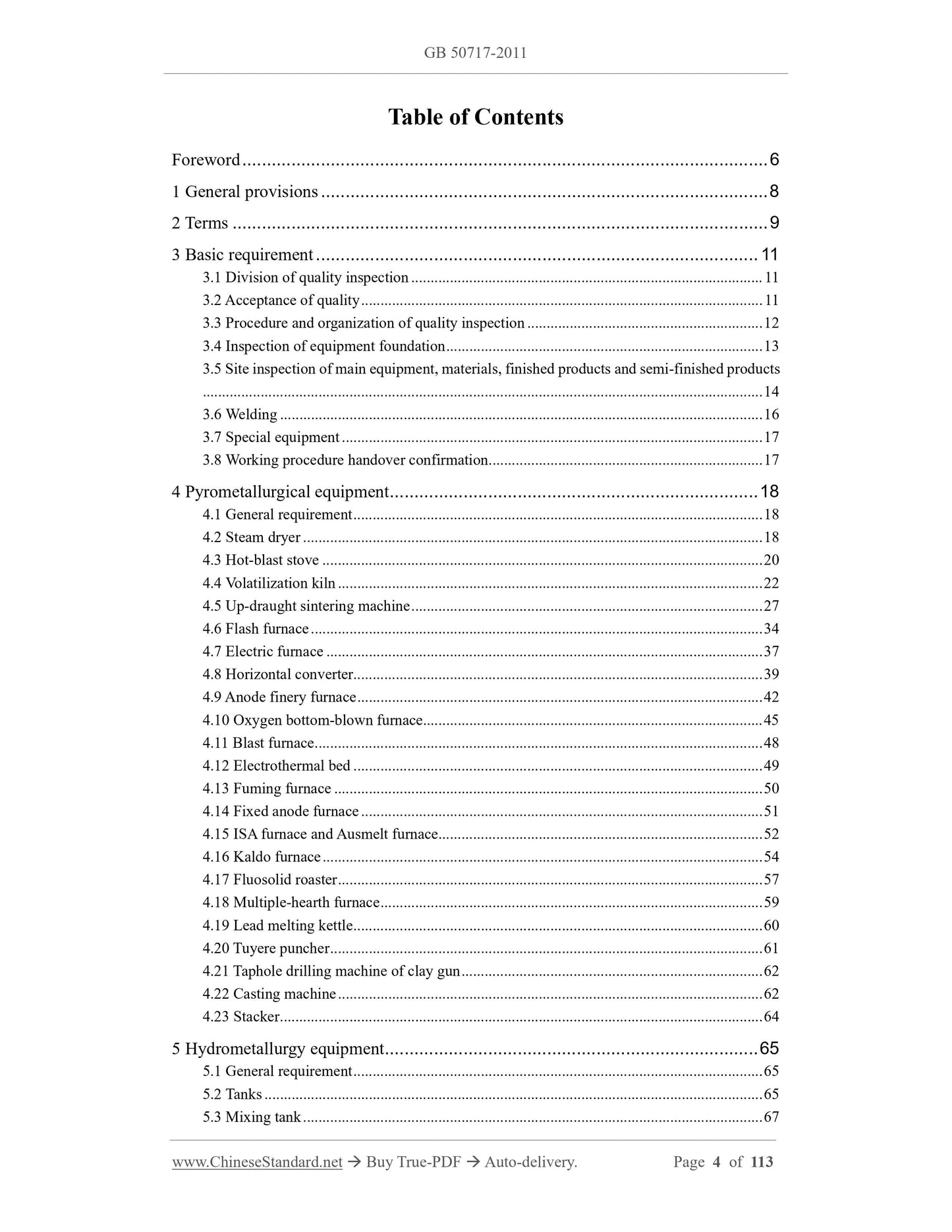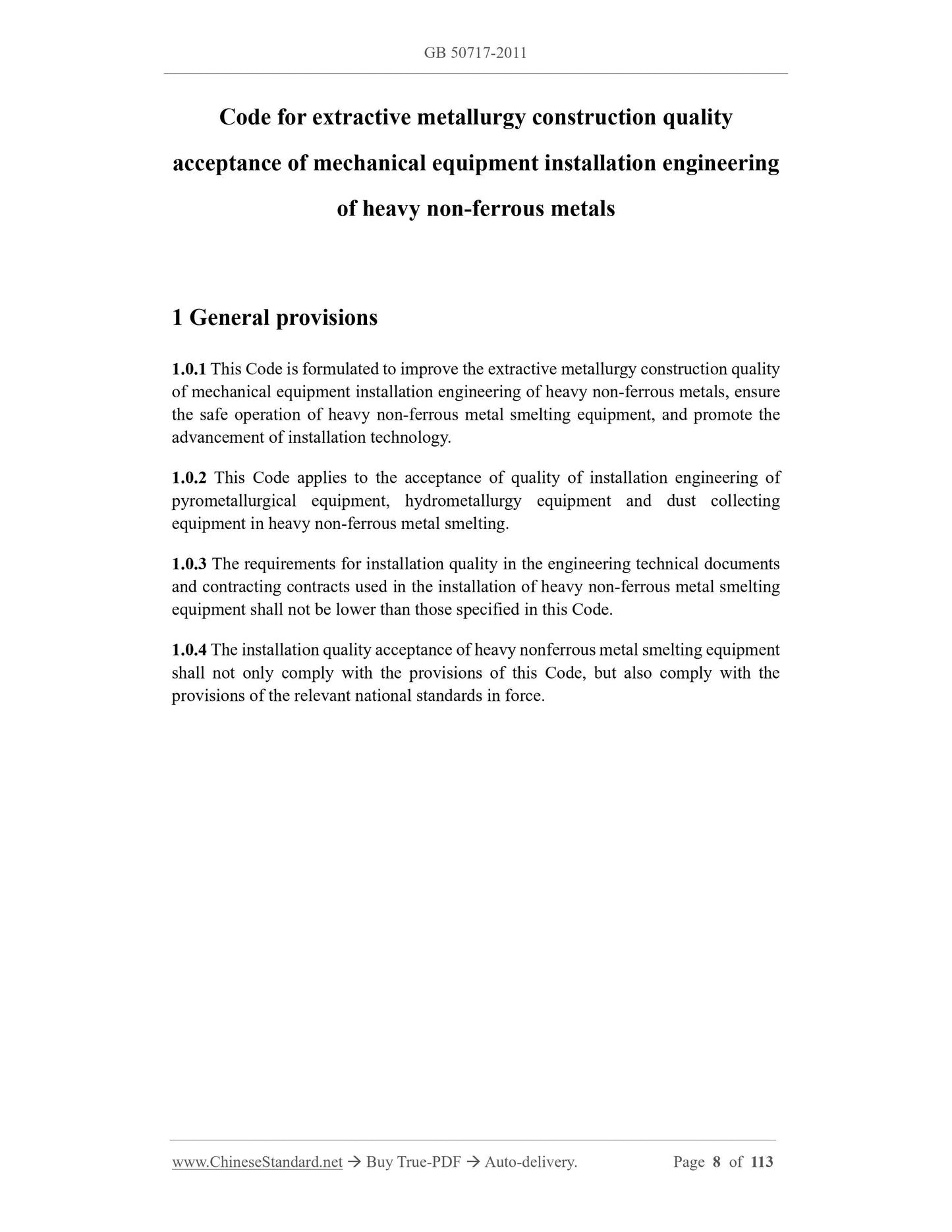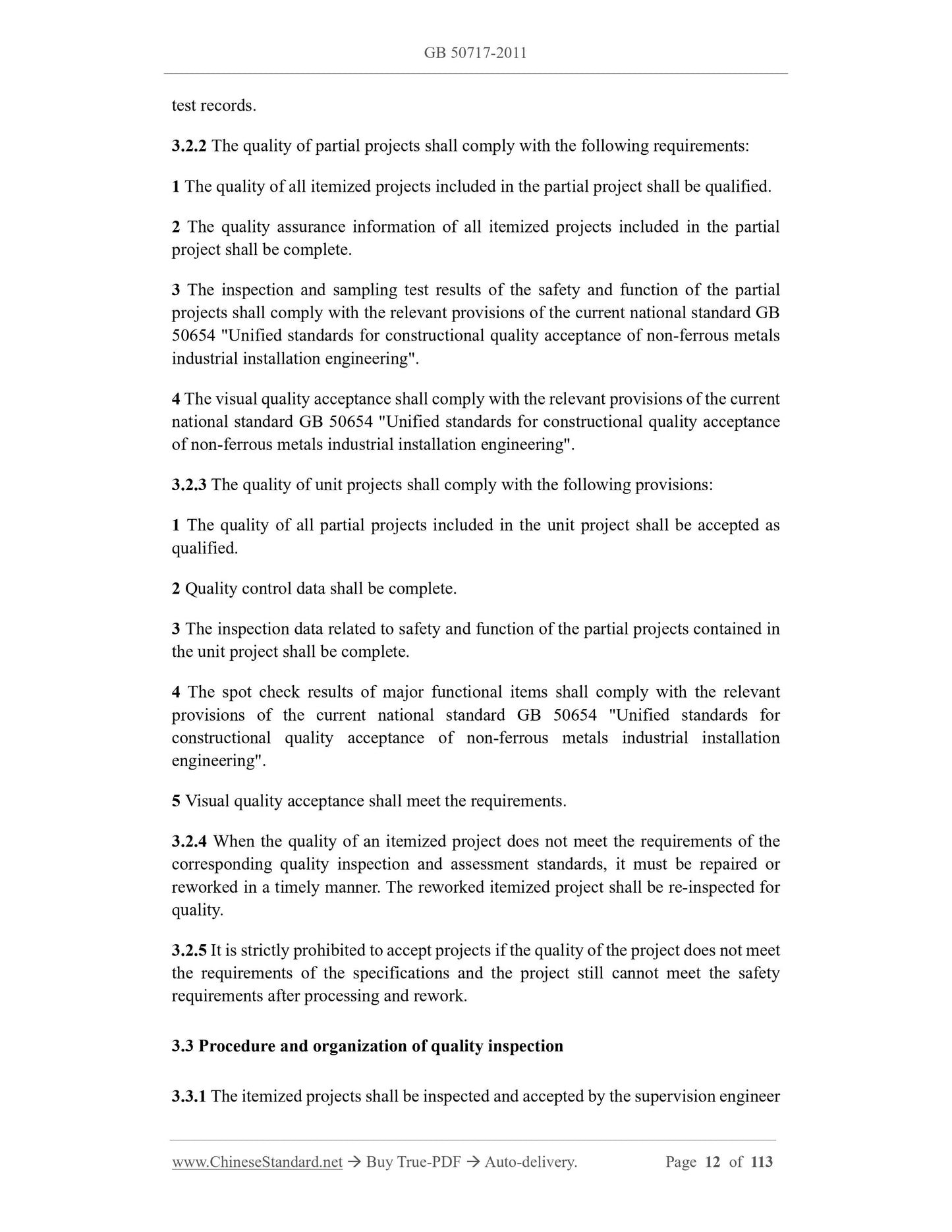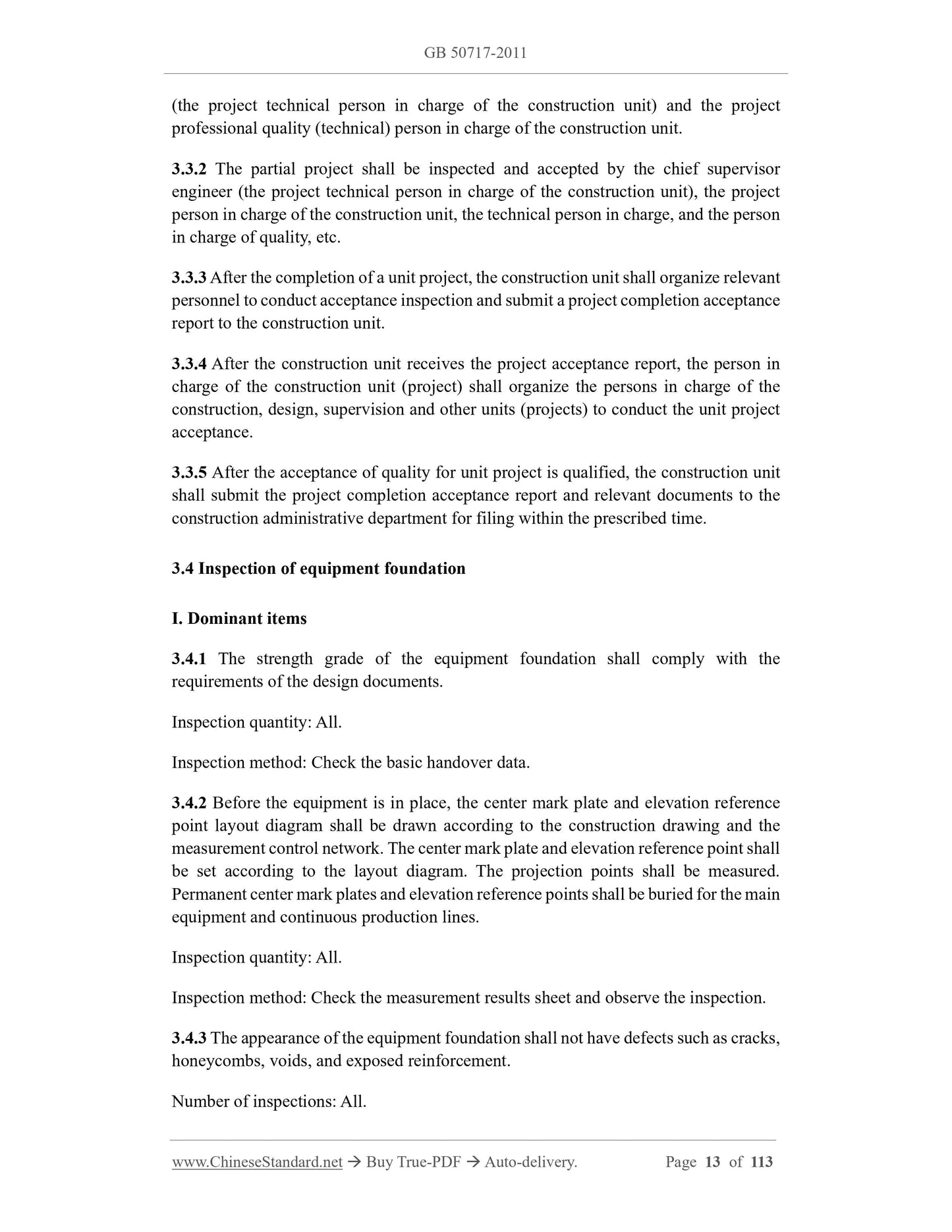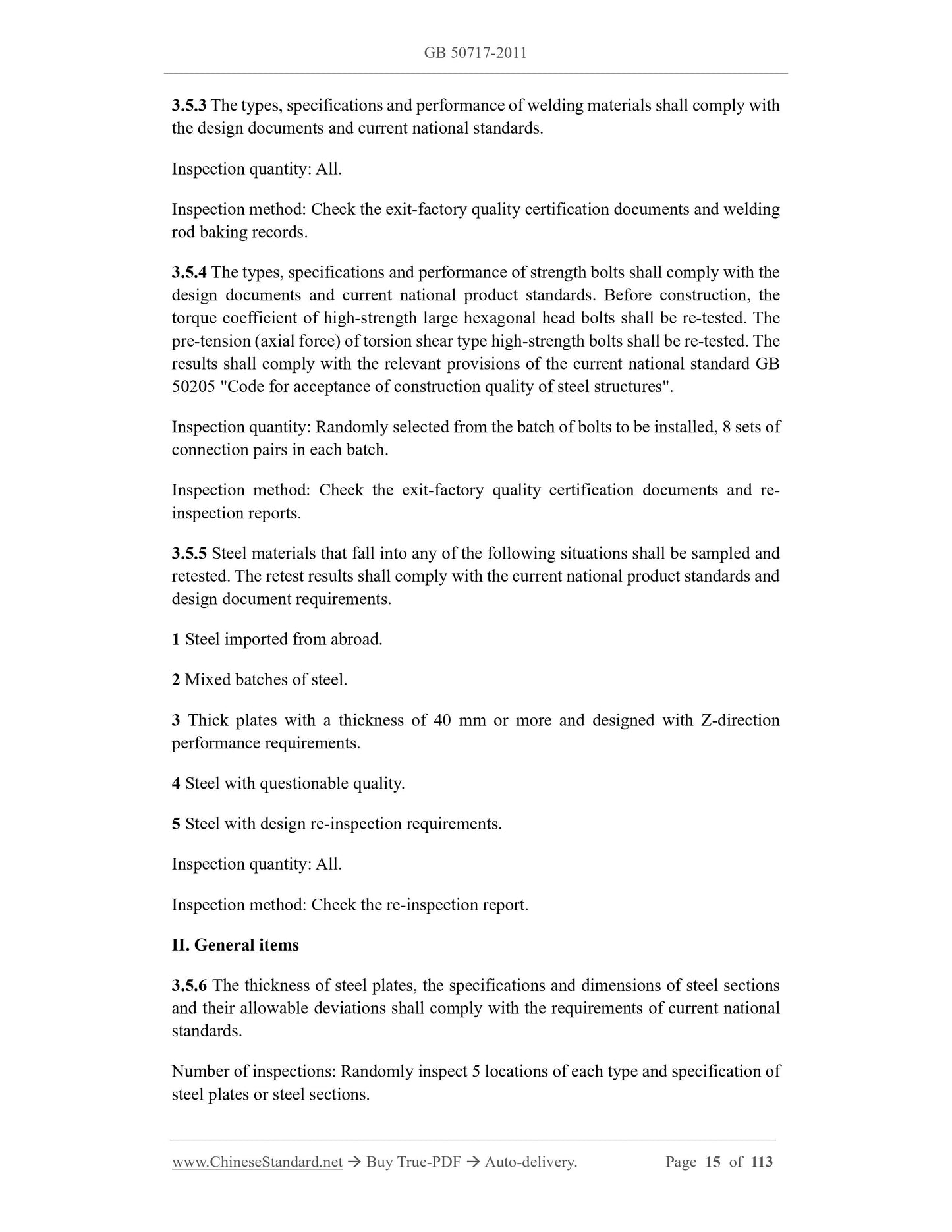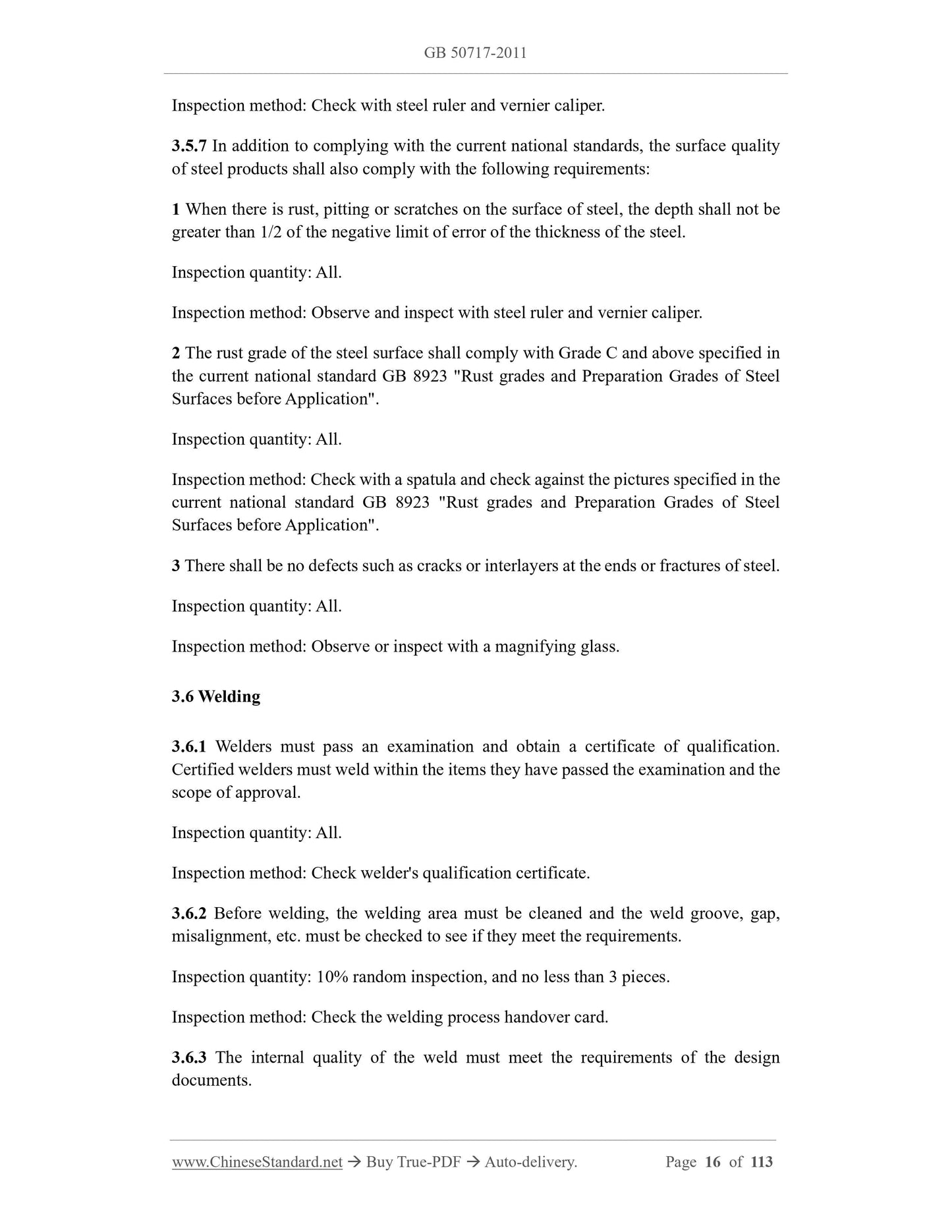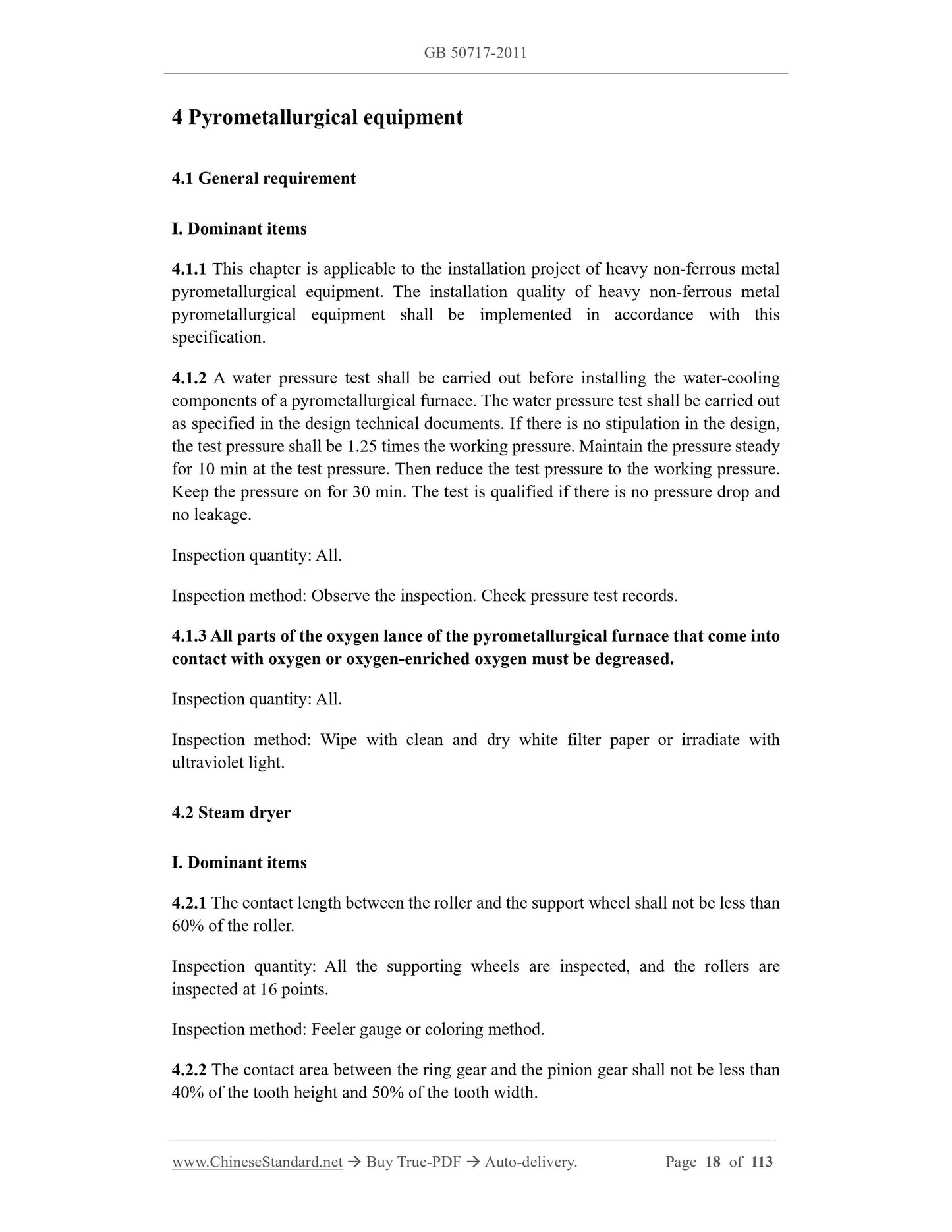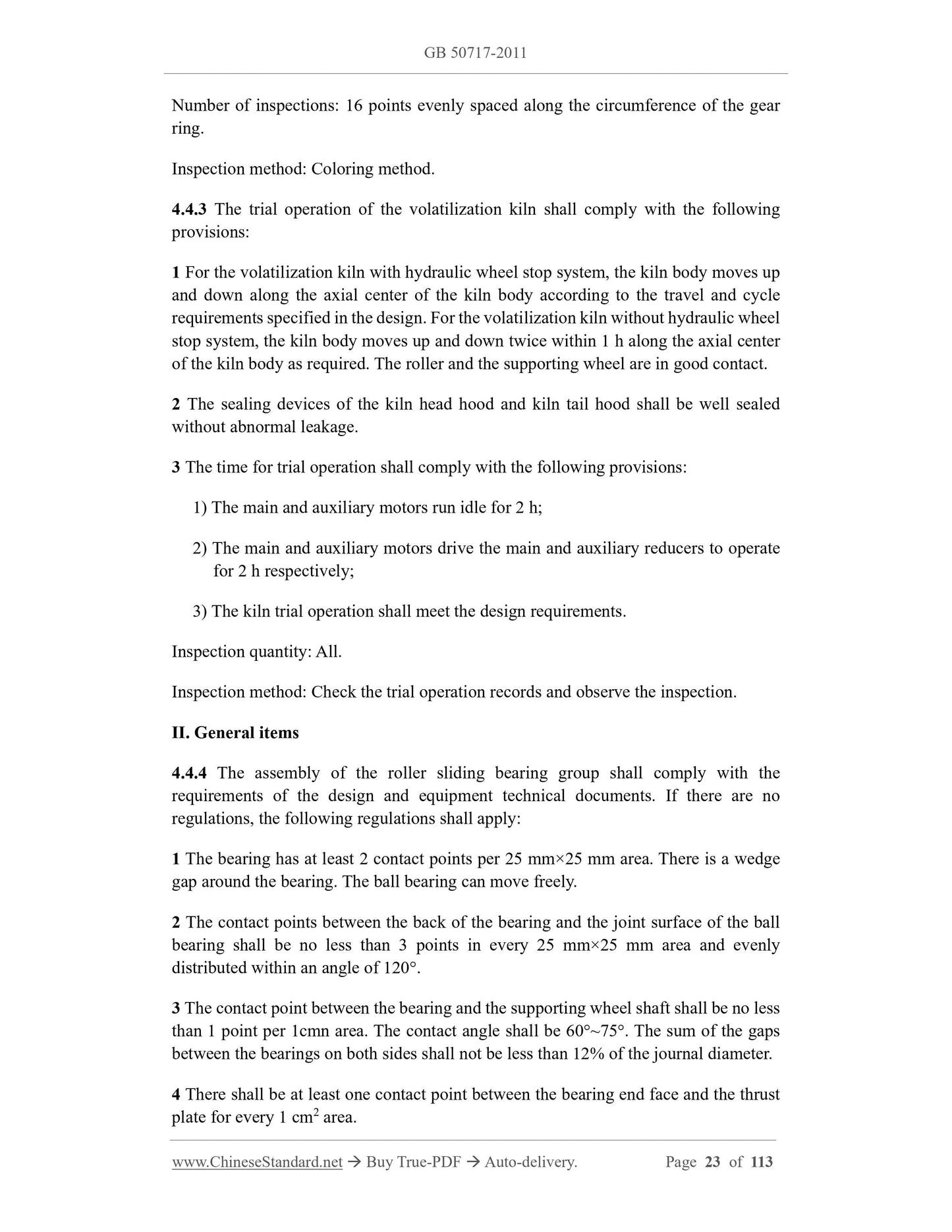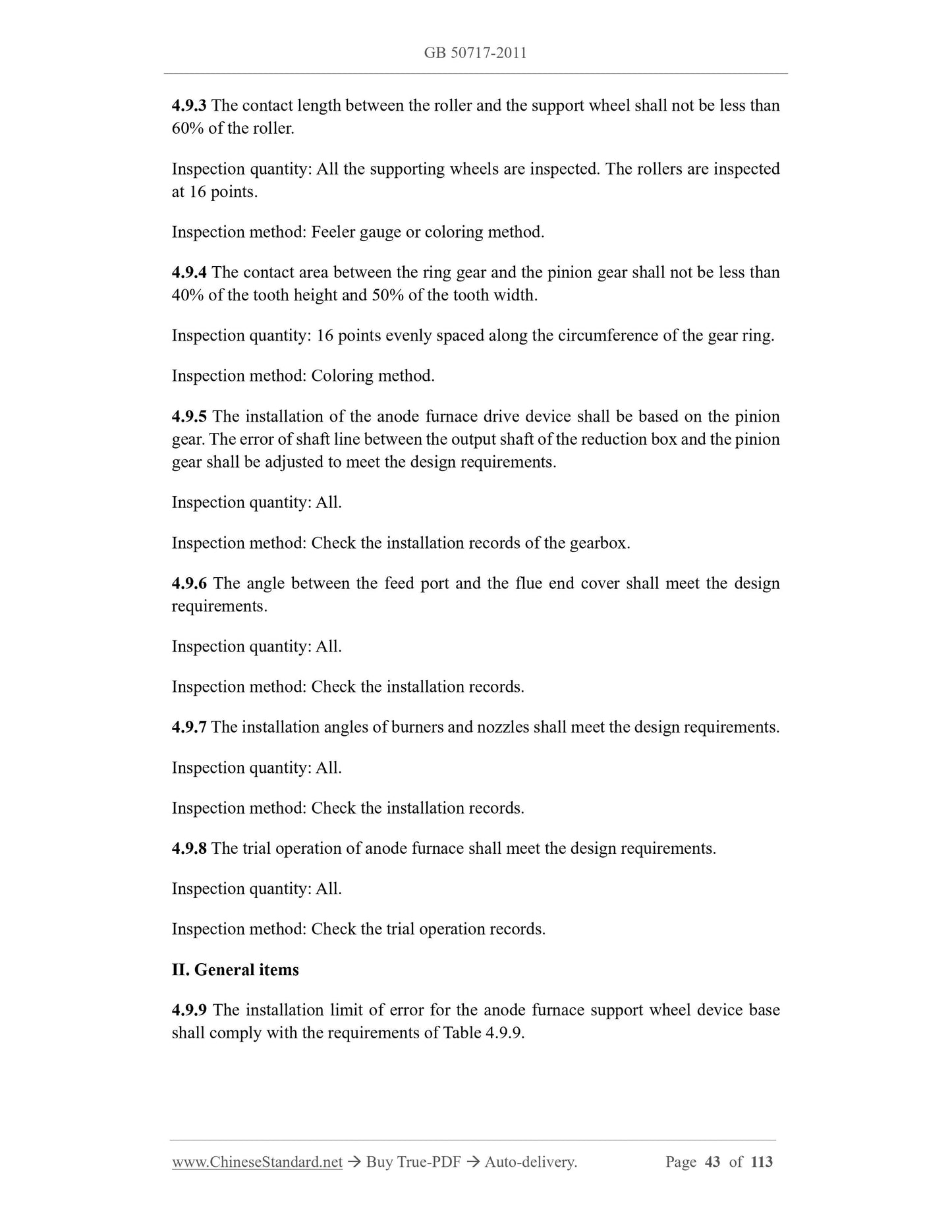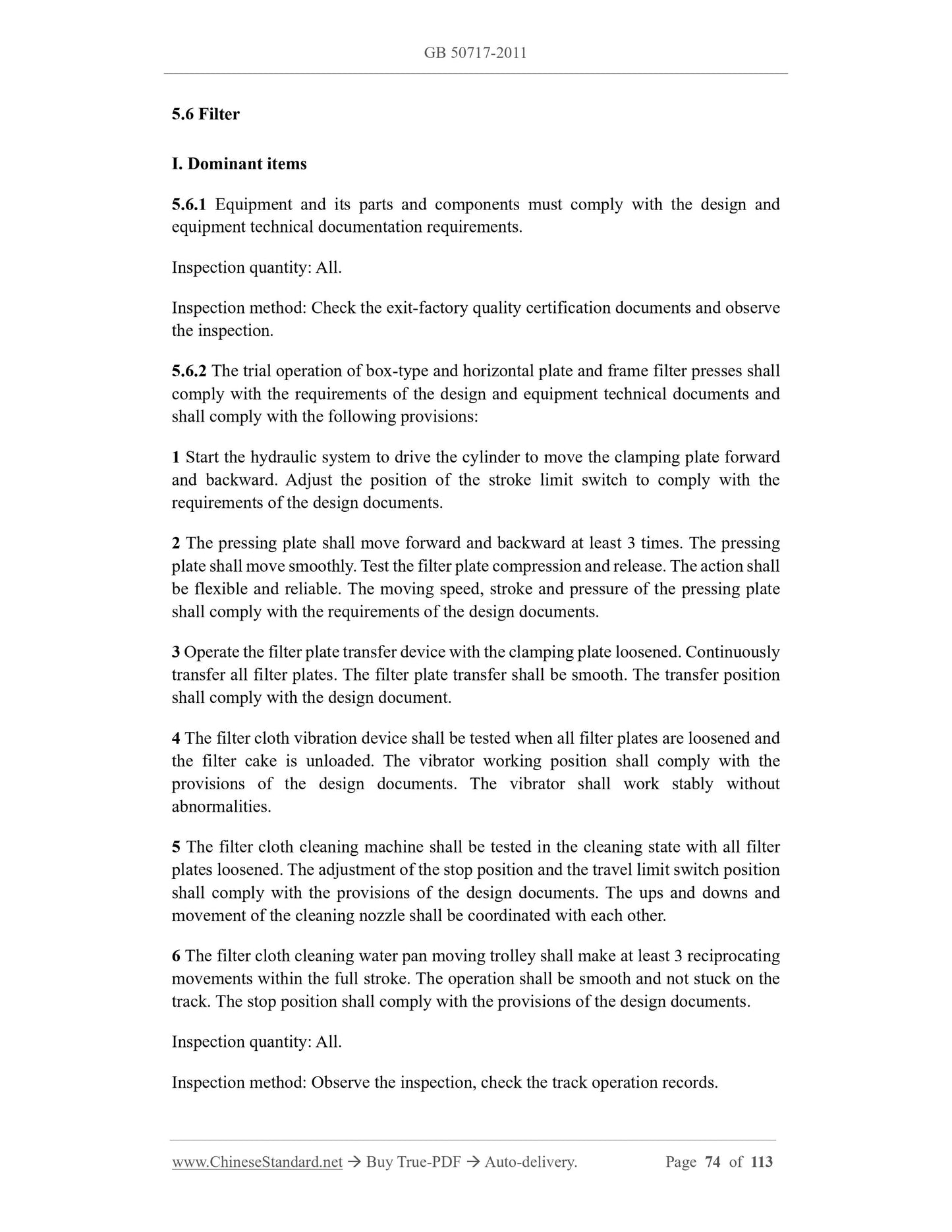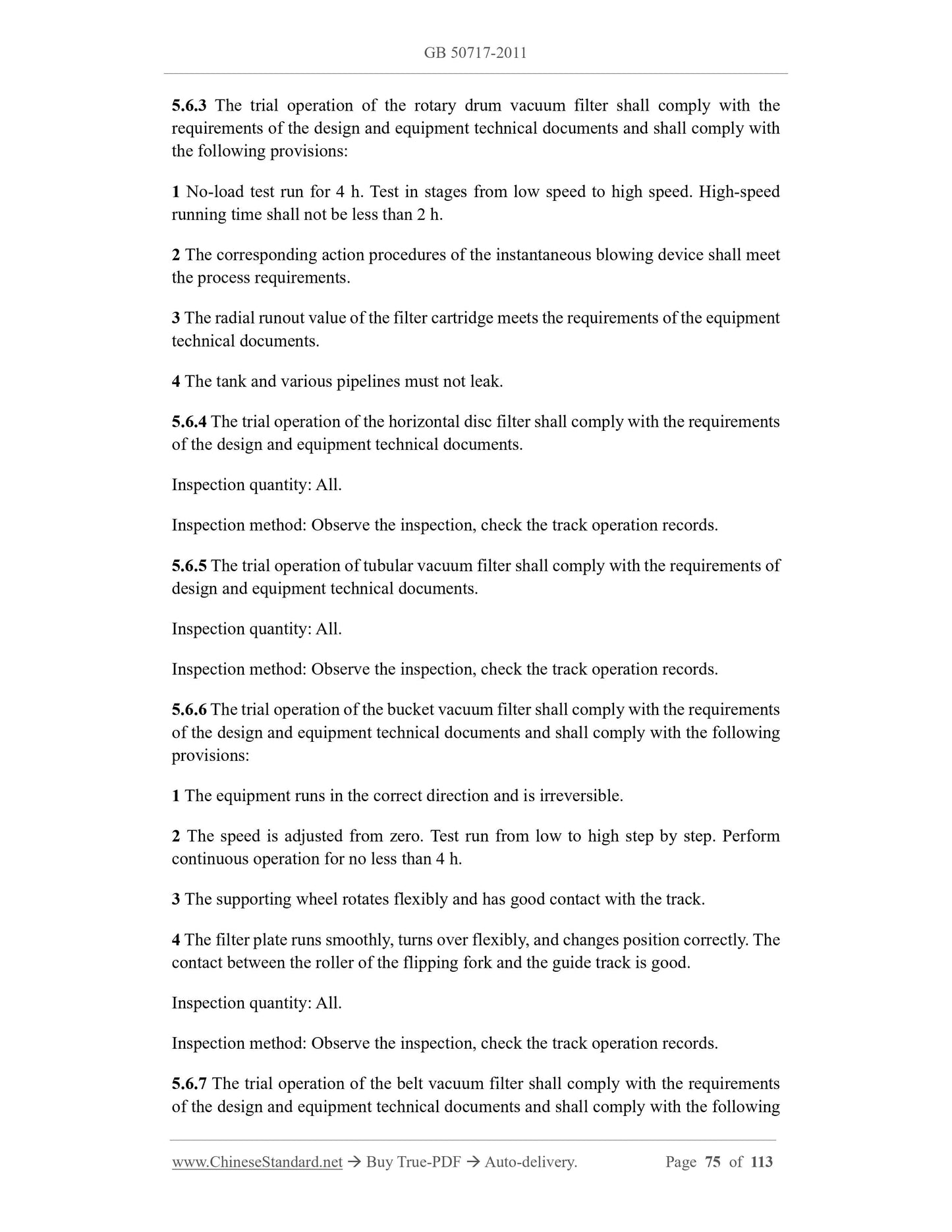1
/
of
12
www.ChineseStandard.us -- Field Test Asia Pte. Ltd.
GB 50717-2011 English PDF
GB 50717-2011 English PDF
Regular price
$1,265.00
Regular price
Sale price
$1,265.00
Unit price
/
per
Shipping calculated at checkout.
Couldn't load pickup availability
GB 50717-2011: Code for extractive metallurgy construction quality acceptance of mechanical equipment installation engineering of heavy non-ferrous metals
Delivery: 9 seconds. Download (and Email) true-PDF + Invoice.Get Quotation: Click GB 50717-2011 (Self-service in 1-minute)
Newer / historical versions: GB 50717-2011
Preview True-PDF
Scope
1.0.1 This Code is formulated to improve the extractive metallurgy construction qualityof mechanical equipment installation engineering of heavy non-ferrous metals, ensure
the safe operation of heavy non-ferrous metal smelting equipment, and promote the
advancement of installation technology.
1.0.2 This Code applies to the acceptance of quality of installation engineering of
pyrometallurgical equipment, hydrometallurgy equipment and dust collecting
equipment in heavy non-ferrous metal smelting.
1.0.3 The requirements for installation quality in the engineering technical documents
and contracting contracts used in the installation of heavy non-ferrous metal smelting
equipment shall not be lower than those specified in this Code.
1.0.4 The installation quality acceptance of heavy nonferrous metal smelting equipment
shall not only comply with the provisions of this Code, but also comply with the
provisions of the relevant national standards in force.
test records.
3.2.2 The quality of partial projects shall comply with the following requirements:
1 The quality of all itemized projects included in the partial project shall be qualified.
2 The quality assurance information of all itemized projects included in the partial
project shall be complete.
3 The inspection and sampling test results of the safety and function of the partial
projects shall comply with the relevant provisions of the current national standard GB
50654 "Unified standards for constructional quality acceptance of non-ferrous metals
industrial installation engineering".
4 The visual quality acceptance shall comply with the relevant provisions of the current
national standard GB 50654 "Unified standards for constructional quality acceptance
of non-ferrous metals industrial installation engineering".
3.2.3 The quality of unit projects shall comply with the following provisions:
1 The quality of all partial projects included in the unit project shall be accepted as
qualified.
2 Quality control data shall be complete.
3 The inspection data related to safety and function of the partial projects contained in
the unit project shall be complete.
4 The spot check results of major functional items shall comply with the relevant
provisions of the current national standard GB 50654 "Unified standards for
constructional quality acceptance of non-ferrous metals industrial installation
engineering".
5 Visual quality acceptance shall meet the requirements.
3.2.4 When the quality of an itemized project does not meet the requirements of the
corresponding quality inspection and assessment standards, it must be repaired or
reworked in a timely manner. The reworked itemized project shall be re-inspected for
quality.
3.2.5 It is strictly prohibited to accept projects if the quality of the project does not meet
the requirements of the specifications and the project still cannot meet the safety
requirements after processing and rework.
3.3 Procedure and organization of quality inspection
3.3.1 The itemized projects shall be inspected and accepted by the supervision engineer
(the project technical person in charge of the construction unit) and the project
professional quality (technical) person in charge of the construction unit.
3.3.2 The partial project shall be inspected and accepted by the chief supervisor
engineer (the project technical person in charge of the construction unit), the project
person in charge of the construction unit, the technical person in charge, and the person
in charge of quality, etc.
3.3.3 After the completion of a unit project, the construction unit shall organize relevant
personnel to conduct acceptance inspection and submit a project completion acceptance
report to the construction unit.
3.3.4 After the construction unit receives the project acceptance report, the person in
charge of the construction unit (project) shall organize the persons in charge of the
construction, design, supervision and other units (projects) to conduct the unit project
acceptance.
3.3.5 After the acceptance of quality for unit project is qualified, the construction unit
shall submit the project completion acceptance report and relevant documents to the
construction administrative department for filing within the prescribed time.
3.4 Inspection of equipment foundation
I. Dominant items
3.4.1 The strength grade of the equipment foundation shall comply with the
requirements of the design documents.
Inspection quantity: All.
Inspection method: Check the basic handover data.
3.4.2 Before the equipment is in place, the center mark plate and elevation reference
point layout diagram shall be drawn according to the construction drawing and the
measurement control network. The center mark plate and elevation reference point shall
be set according to the layout diagram. The projection points shall be measured.
Permanent center mark plates and elevation reference points shall be buried for the main
equipment and continuous production lines.
Inspection quantity: All.
Inspection method: Check the measurement results sheet and observe the inspection.
3.4.3 The appearance of the equipment foundation shall not have defects such as cracks,
honeycombs, voids, and exposed reinforcement.
Number of inspections: All.
3.5.3 The types, specifications and performance of welding materials shall comply with
the design documents and current national standards.
Inspection quantity: All.
Inspection method: Check the exit-factory quality certification documents and welding
rod baking records.
3.5.4 The types, specifications and performance of strength bolts shall comply with the
design documents and current national product standards. Before construction, the
torque coefficient of high-strength large hexagonal head bolts shall be re-tested. The
pre-tension (axial force) of torsion shear type high-strength bolts shall be re-tested. The
results shall comply with the relevant provisions of the current national standard GB
50205 "Code for acceptance of construction quality of steel structures".
Inspection quantity: Randomly selected from the batch of bolts to be installed, 8 sets of
connection pairs in each batch.
Inspection method: Check the exit-factory quality certification documents and re-
inspection reports.
3.5.5 Steel materials that fall into any of the following situations shall be sampled and
retested. The retest results shall comply with the current national product standards and
design document requirements.
1 Steel imported from abroad.
2 Mixed batches of steel.
3 Thick plates with a thickness of 40 mm or more and designed with Z-direction
performance requirements.
4 Steel with questionable quality.
5 Steel with design re-inspection requirements.
Inspection quantity: All.
Inspection method: Check the re-inspection report.
II. General items
3.5.6 The thickness of steel plates, the specifications and dimensions of steel sections
and their allowable deviations shall comply with the requirements of current national
standards.
Number of inspections: Randomly inspect 5 locations of each type and specification of
steel plates or steel sections.
Inspection method: Check with steel ruler and vernier caliper.
3.5.7 In addition to complying with the current national standards, the surface quality
of steel products shall also comply with the following requirements:
1 When there is rust, pitting or scratches on the surface of steel, the depth shall not be
greater than 1/2 of the negative limit of error of the thickness of the steel.
Inspection quantity: All.
Inspection method: Observe and inspect with steel ruler and vernier caliper.
2 The rust grade of the steel surface shall comply with Grade C and above specified in
the current national standard GB 8923 "Rust grades and Preparation Grades of Steel
Surfaces before Application".
Inspection quantity: All.
Inspection method: Check with a spatula and check against the pictures specified in the
current national standard GB 8923 "Rust grades and Preparation Grades of Steel
Surfaces before Application".
3 There shall be no defects such as cracks or interlayers at the ends or fractures of steel.
Inspection quantity: All.
Inspection method: Observe or inspect with a magnifying glass.
3.6 Welding
3.6.1 Welders must pass an examination and obtain a certificate of qualification.
Certified welders must weld within the items they have passed the examination and the
scope of approval.
Inspection quantity: All.
Inspection method: Check welder's qualification certificate.
3.6.2 Before welding, the welding area must be cleaned and the weld groove, gap,
misalignment, etc. must be checked to see if they meet the requirements.
Inspection quantity: 10% random inspection, and no less than 3 pieces.
Inspection method: Check the welding process handover card.
3.6.3 The internal quality of the weld must meet the requirements of the design
documents.
Basic Data
| Standard ID | GB 50717-2011 (GB50717-2011) |
| Description (Translated English) | Code for extractive metallurgy construction quality acceptance of mechanical equipment installation engineering of heavy non-ferrous metals |
| Sector / Industry | National Standard |
| Classification of Chinese Standard | P73 |
| Classification of International Standard | 77.010 |
| Word Count Estimation | 101,157 |
| Date of Issue | 2011-07-26 |
| Date of Implementation | 2012-06-01 |
| Quoted Standard | GB 50128; GB 50194; GB 50205; GB 50231; GB 50654; GB 8923; JBJ 46 |
| Regulation (derived from) | Bulletin of the Ministry of Housing and Urban No. 1105 |
| Issuing agency(ies) | Ministry of Housing and Urban-Rural Development of the People's Republic of China; General Administration of Quality Supervision, Inspection and Quarantine of the People's Republic of China |
| Summary | This Chinese standard applies to heavy non-ferrous pyrometallurgical smelting equipment, hydrometallurgy equipment and dust collection equipment installation engineering quality inspection. |
Share
